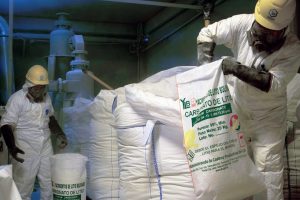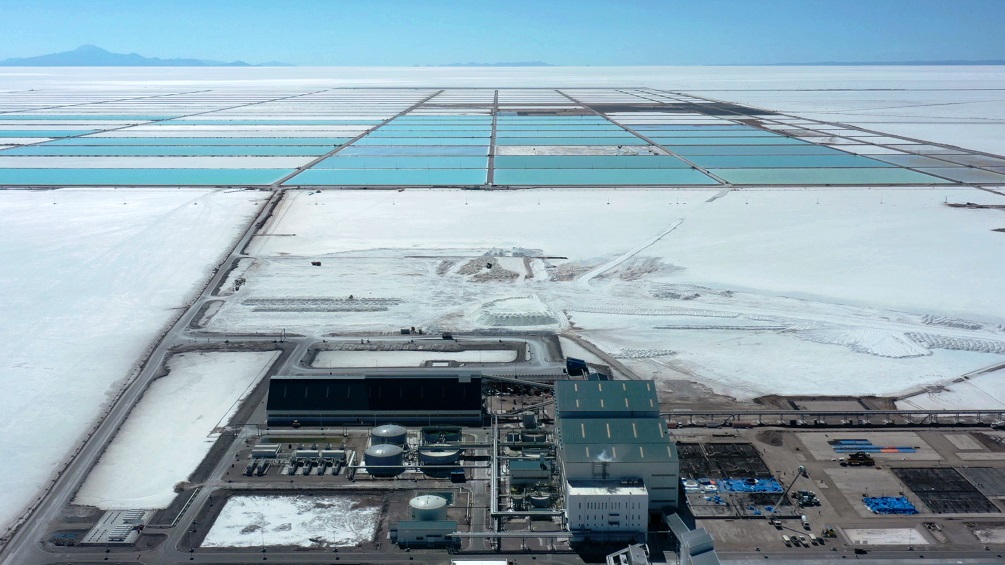In late September, the Bolivian government, through its state-owned company Yacimientos de Litio, partnered with the Chinese company Xinjiang TBEA Group Baocheng to set up new lithium carbonate processing plants, now in the salt flats of Pastos Grandes and Coipasa, in Potosí and Oruro departments, with a $2.4 billion investment. According to the agreement, Bolivia will hold 51 percent of stocks and operations will start in 2021.
“[We want to] help the industrialization of companies, such as the metallurgic and chemical industries to make Bolivia’s energy and industrial dream come true,” Chinese Ambassador to Bolivia Liang Yu told the press. “By 2025, China will need 800,000 tons of lithium per year.”
The Chinese project includes the construction of five plants that will produce 146,000 annual tons of metallic lithium, lithium hydroxide, boric acid, pure bromide, and sodium bromide, as shown in a video of the Bolivian Ministry of Energies. Lithium, a fine, silver-white powder that can be found in brines (water with high salt concentrations), is used to make rechargeable batteries for electronic devices and electric vehicles, and in manufacturing ceramic, glass, and aluminum.
“The partnership with China isn’t going to change Bolivia’s panorama. These kinds of agreements only have one-way benefits for the one who owns the technology; there are no economic-social gains for the population,” Daniel Pou, researcher at the Latin American Social Sciences Institute in the Dominican Republic, told Diálogo. “Lithium and bauxite reserves, the basis of new technologies, are places where we encounter China’s voracity to dominate the supply of these elements, as part of its global growth strategy.”

“By [controlling] 63 percent of the battery market, China is the main consumer of lithium carbonate in the world,” Ingrid Garcés, a professor at the University of Antofagasta, Chile, told Chilean newspaper El Clarín. The Bolivian government said that the country has 21 million metric tons of the alkaline metal, which means that Bolivia might have the largest lithium reserve in the world.
“The government should disclose the environmental impact studies of lithium exploitation,” said the Observatory of Mining Conflicts in Latin America (OCMAL, in Spanish) on its website. “Lithium mining has an inevitable social-environmental impact. Lithium extraction in the Andean salt lakes and in the salt flats of Uyuni, Atacama, and Hombre Muerto, among others, results in the use of toxic chemicals, soil and water salinization, air pollution, loss of biodiversity, and especially an imbalance in the regional hydrological system.”
New products that require batteries come onto the market every year. From electric cars that travel hundreds of miles with just one charge to chainsaws as powerful as the gasoline-fueled versions. But this increase has raised concerns that the world’s sources of lithium, the heart of many new rechargeable batteries, might eventually run out, said OCMAL.
“If the world wants a significant number of electric vehicles by 2030, it’s necessary to make lithium alternatives a top priority,” Pou concluded. “Batteries based on sodium or potassium, elements that are more commonly found around the planet, might have a longer life, cause less pollution, and cost less than lithium-based options; they are a better alternative.”









